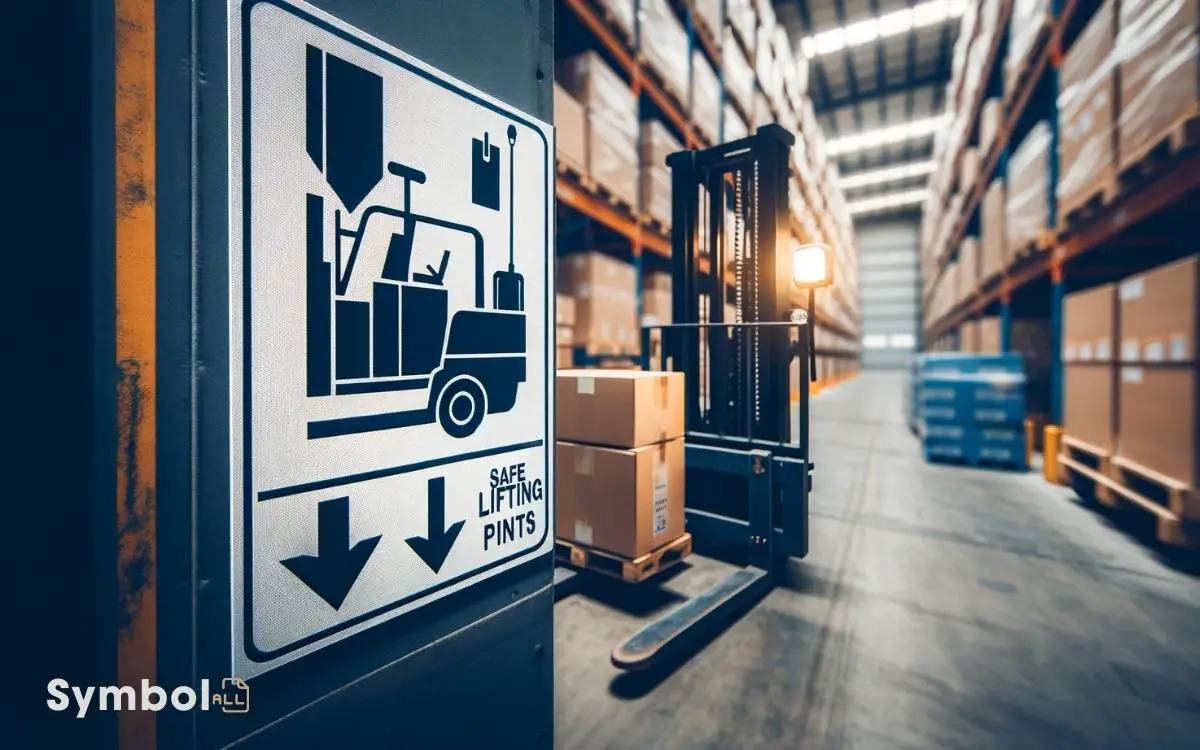Which Symbol Is Used to Indicate Safe Lifting Points?
You’ll spot safe lifting points by a universal symbol, crucial for preventing accidents and ensuring both object and equipment integrity. This symbol a simplified, easily distinguishable mark is strategically placed on machinery, equipment, or components.
Recognizing it is key for smooth operations, significantly reducing injury risk and equipment damage. It communicates clear, universal instructions, essential in global operations for guiding operators to weight-bearing spots.
Adherence guarantees everyone’s safety and maintains equipment integrity. Across industries, this symbol is vital for operational safety and efficiency. With the right insight, you’ll navigate the complexities of safe lifting with ease.

Key Takeaways
Identifying the Symbol
To accurately identify safe lifting points, you must first recognize the universal symbol that signifies these areas. This symbol is crucial for ensuring the safety and integrity of both the item being lifted and the lifting equipment.
It typically appears as a simplified representation, easily distinguishable from other markings, designed to catch your eye immediately.
You’ll find it strategically placed on machinery, equipment, or components, guiding you to the points engineered to withstand the stress of lifting.
Understanding its appearance and location is essential. By familiarizing yourself with this symbol, you ensure that lifting operations proceed smoothly.
It’s not just about recognizing the symbol; it’s about understanding its placement, which directly correlates with the structural design intended for safe lifting. This knowledge is foundational for anyone involved in lifting operations, enhancing safety and efficiency.
Symbol Significance
The universal symbol for safe lifting points isn’t just a marker; it’s a crucial guide that significantly reduces the risk of injury and equipment damage during lifting operations. This symbol’s significance lies in its ability to communicate clearly and universally.
You don’t need to speak a specific language to understand its meaning, making it incredibly efficient in global operations. It guides operators in identifying the exact spots on equipment or loads that are designed to bear the weight during lifting.
This ensures that lifting is done safely and efficiently, minimizing the risk of accidents. By adhering to these designated points, you’re not just following a procedure; you’re ensuring the safety of everyone involved and the integrity of the equipment or load being handled.
Usage Across Industries
Understanding the universal symbol for safe lifting points isn’t just beneficial; it’s actively employed across various industries to ensure operational safety and efficiency.
In the manufacturing sector, this symbol guides machinery operators and assembly workers in identifying the safest spots for attaching hoists or hooks, minimizing the risk of equipment damage or personal injury.
Similarly, in construction, it’s paramount for coordinating the movement of heavy materials across sites, ensuring that cranes and forklifts are used correctly and safely.
The logistics and shipping industries rely on these symbols to streamline the loading and unloading processes, reducing the likelihood of mishaps during transit.
Each application of the symbol across these fields not only enhances operational efficiency but also reinforces a culture of safety, demonstrating its crucial role in varied workplace environments.
Safety Guidelines
Adhering to established safety guidelines ensures that the identification and use of safe lifting points significantly reduce workplace accidents and enhance operational efficiency.
It’s crucial to regularly inspect lifting points for signs of wear, corrosion, or damage. This proactive approach prevents equipment failure, safeguarding both personnel and materials.
You must also adhere to the weight limits specified by manufacturers, as exceeding these can result in catastrophic failures. Understanding the dynamics of the load, such as its center of gravity, is essential for maintaining balance and preventing accidents.
Implementing these safety measures not only minimizes the risk of injury but also promotes a culture of safety within the workplace, underscoring the importance of diligence and foresight in operational planning.
Training and Implementation
Effective training and implementation of safe lifting practices are crucial for translating safety guidelines into everyday workplace actions. You’ll find that knowledge isn’t enough unless it’s put into practice with precision and consistency.
Training programs shouldn’t only cover the identification of safe lifting points through symbols but also the correct techniques to lift, lower, and move objects without causing injury.
This means employees must be taught how to assess weights, balance loads, and use mechanical aids when necessary.
Regular drills and refresher courses ensure this knowledge remains fresh and top of mind. Moreover, implementing a culture of safety, where every employee feels responsible for not just their safety but also that of their colleagues, is essential.
It’s about creating an environment where safety protocols are lived, not just learned.
Conclusion
Understanding the symbol for safe lifting points is crucial in preventing workplace injuries. Across various industries, this symbol serves as a universal language of safety, ensuring that everyone knows where and how to lift safely.
Despite its widespread usage, a surprising 20% of workplace injuries still stem from improper lifting techniques.
It underscores the importance of continuous training and strict adherence to safety guidelines. By prioritizing these practices, we can significantly reduce injury rates and promote a safer work environment.






